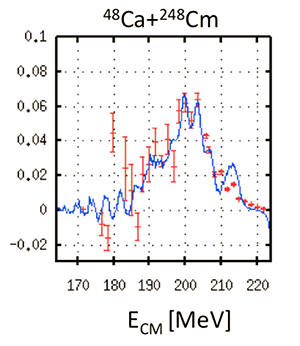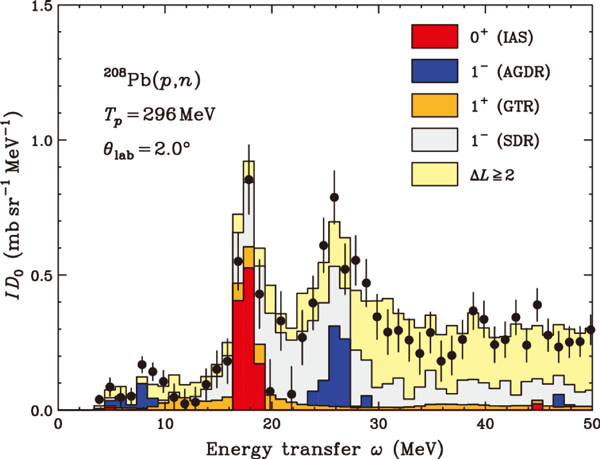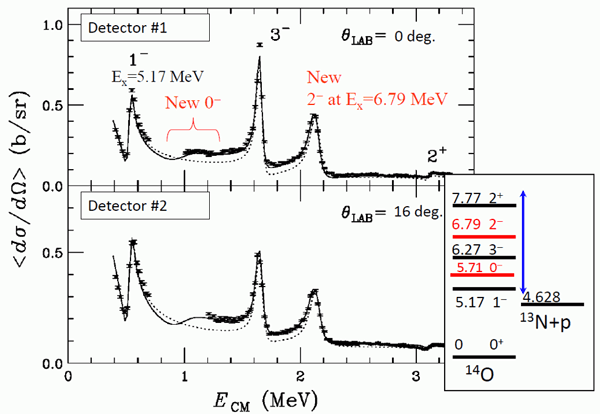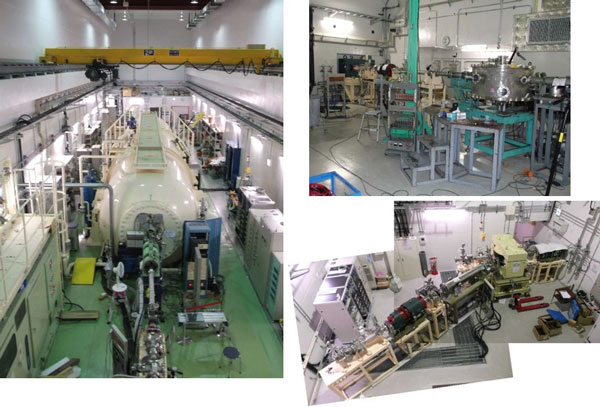
HOME / Departments / Physics / Experimental Nuclear Physics
Experimental Nuclear Physics
-
- WAKASA Tomotsugu, Professor
- SAKAGUCHI Satoshi, Professor
- TERANISHI Takashi, Associate Professor
- ICHIKAWA Yuichi, Associate Professor
- TAKAMINE Aiko, Associate Professor
- NIWASE Toshitaka, Assistant Professor
- (MORITA Kosuke*, Professor)
- * Institute for Advanced Study
- Our group studies nucleon and hadron many body systems experimentally. Accelerators in Kyushu University and in RIKEN and RCNP are used. Current research topics are as follows:
- Search for new superheavy element. Spectroscopic and chemical studies of the nuclei of the heaviest elements.
- Spin-isospin responses and nuclear medium effects in stable and unstable nuclei.
- Spectroscopy of neutron-rich or proton-rich unstable nuclei.
- Low-energy nuclear physics. Technical developments using Kyushu Tandem accelerator.
1. Research of Superheavy Element

We are conducting/participating experiments for studying nuclei of superheavy elements at RIKEN Nishina Center for Accelerator-Based Science. One of recent topics is a measurement of fusion barrier distributions in the superheavy region. Superheavy elements have been produced by complete fusion reactions with two heavy nuclei. In many case, an incident energy of such reactions has been chosen in the vicinity of Coulomb barrier of the system.
We measured target-like particles emitted into very forward angle (0 ± 2.2 deg.) by using a gas-filled type recoil separator. We deduced excitation functions of quasi-elastic scattering cross-section normalized to the Rutherford scattering cross-section at very backward angle (180 ± 2.2 deg.) from the measured yields of target-like particles. The barrier distributions was deduced from the excitation functions by taking the first derivative of them with incident energy.
An example of the distribution is shown in Fig.1 in the case of248Cm +48Ca system [1]. The reaction is used to produce isotopes of the 116thelement Lv (livermorium) by the complete fusion. The barrier distribution gives information on the reaction mechanism at the entrance channel of the reaction.
We are planning to perform experiment aiming at producing the heaviest isotope of the element 118,295Uuo in the nearest future.
2. Anti-analog Giant Dipole Resonance (AGDR)
The anti-analog giant dipole resonance (AGDR) is a collective vibration mode in which protons and neutrons oscillate out of phase, with the symmetry energy in the nuclear equation of state (EOS) acting as the restoring force. We have successfully separated this AGDR (blue region in Fig.2) from other excitation modes by performing multipole decomposition analysis (MDA) to the208Pb(p,n) data as shown in Fig. 2. The energy difference between the AGDR and the isobaric analog state (IAS) is about 8.7 MeV, which suggests moderate stiffness of nuclear EOS [2].

3. Spectroscopy of Unstable Nuclei: Proton Resonant Scattering
We have studied proton resonant scattering A+p → B → A+p, where A is an unstable nuclei and B is a resonance (Fig. 3). Experiments have been performed using radioactive nuclear beams at CRIB (CNS, U-Tokyo) and RIPS (RIKEN). Proton resonances in proton-rich nuclei often enhance the astrophysical A(p,g)B reaction rates in explosive hydrogen burning processes. Stability and decay modes of extremely proton rich nuclei are affected by existence of proton resonances. Isobaric analog resonances with T = Tg.s.+ 1 can be populated by proton scattering on neutron-rich unstable nuclei and provide useful spectroscopic information on unstable nuclei.

4. Tandem Accelerator at Kyushu University
We have operated our own tandem accelerator facility for more than 40 years. Recently we shut down the facility at Hakozaki campus and reconstructed a new facility at Ito campus (Fig. 4). A newly installed 8 MV tandem accelerator will be used for studying low-energy nuclear reactions and for developing detector systems and experimental techniques.

References
[1] T. Tanaka, Master thesis, Kyushu University (2016).
[2] J. Yasuda et al., Prog. Theor. Exp. Phys., 063D02 (2013).